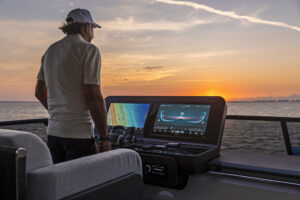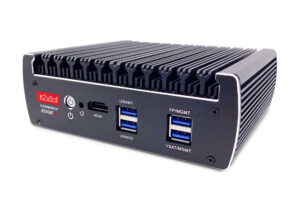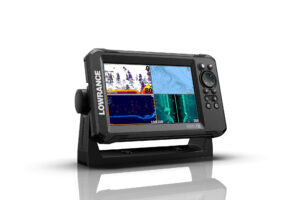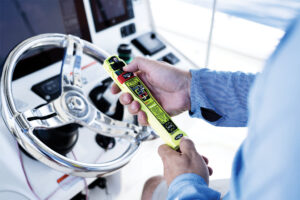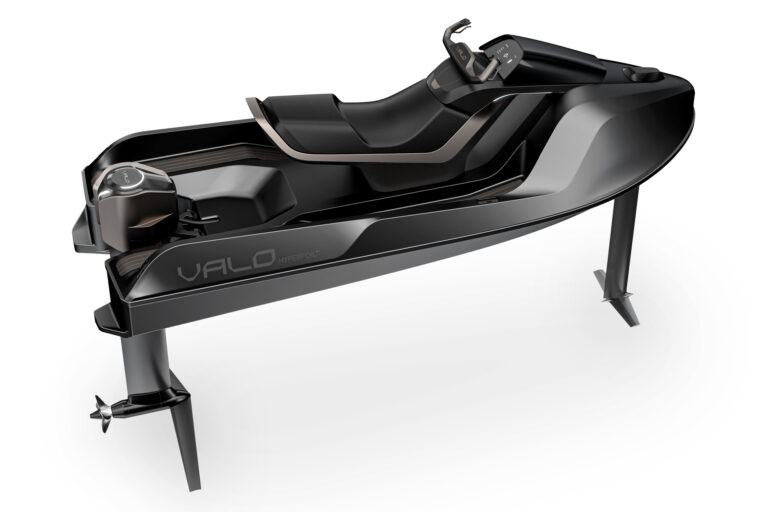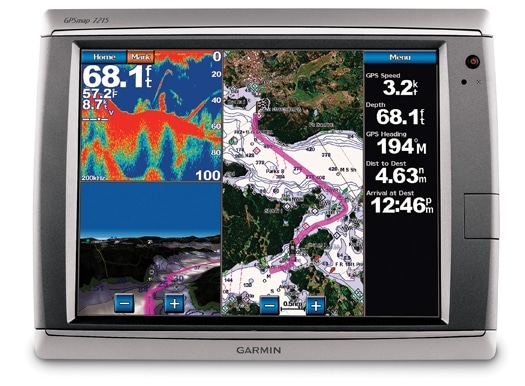
ytgjan4elect525.jpg
There’s an obvious reason that marine electronics manufacturers have so far weathered the recent economic storms with less pain than their boatbuilding brethren. While very able used yachts are plentiful, the first thing a new owner often wants to do is replace some or all of the electronics, because they’ve gotten so much better so quickly. However, our general expectations about what electronics could and should do for us, inexpensively and effortlessly, wherever we wander, have also been progressing up a knuckle-shaped curve. Thus, some boaters-particularly the involved sorts who participate in my blog-can easily dream up numerous improvements to their electronic boating life, while manufacturers anxiously work to identify actually doable dreams, and act on them, lest they be left behind. Conversations with both these groups regarding trends in marine electronics left my head spinning, and so may yours.
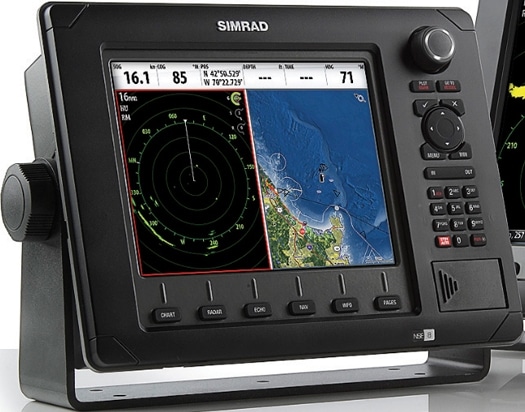
| | |
So let’s start with the more obvious trends and work our way toward the far out. The networked multifunction displays (MFDs) that now dominate most yacht helms are coming out as the specialized computers they actually are. Though manufacturers used to be shy about this truth, Simrad now brags about the 1.6 GHz processor, 512 MB RAM, and 80 GB hard drive in its new NSE Series, like a Dell laptop ad, and owners of that series, like those of Furuno’s NavNet 3D machines, can usefully add PCstyle interface accessories like keyboards and mice. As I witnessed during my summer of radar testing, the modern MFDs are computer-fast and powerful.
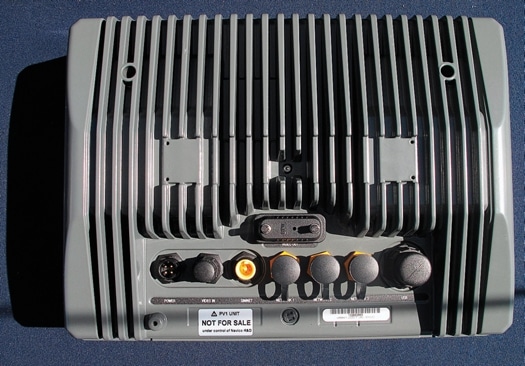
| | |
As MFDs have gotten more able, the use of standard PCs for principal navigation has trended downward. A specific example of why is support for multiple types of electronic charts. This was once a real plus for PC charting programs, particularly for those cruising to exotic locales where the quality of different chart brands is often more variable. The quality of chart extras like photo maps, bathymetry for 3-D presentations, and point-of-interest data vary everywhere. Lowrance HDS and Simrad NSE displays now offer U.S. skippers the choice of Navico’s own embedded Insight cartography or any of the Navionics card formats. Raymarine’s new E Series Widescreen will eventually offer a global choice amongst all Jeppesen C-Map and Navionics formats. The new European GeoNav MFD series (coming to the U.S. next fall) includes the same choices. And rumor has it that Furuno may add more chart options to its NavNet 3D system, which is already dual format in some areas.
PC charting programs were also first to blend charts and related information into three-dimensional screens, but MFD developers are pursuing this complex, though valuable, presentation feature too-call it a big-time trend-and the information they have to add includes solid-state or extrahigh- definition radar that’s just not available for integration with charting programs like Nobeltec’s Admiral/VNS or Rosepoint’s Coastal Explorer. That situation galls certain boaters who don’t want to be locked into the closed system of one MFD brand but do notice that they’ve all adopted the standard PC Ethernet protocol for networking those high-performance radars, as well as black box sonars, satellite weather receivers, and other high-data-rate components. The Max- Sea TimeZero Explorer software package just coming to market in the U.S. powerfully illustrates the concept that they want to see expanded and opened up.
TimeZero runs on a conventional PC, marinized if necessary, and thus includes features like easy weather data downloads using WiFi, cell, or satphone. But a single Ethernet cable can also connect Time- Zero to an entire suite of Furuno NavNet 3D MFDs, radars, etc., plus whatever multibrand low-data-rate devices-like GPS receivers, wind sensors, high bilge alarms, engine gauges, and even nav light switches- are running on the vessel’s NMEA 2000 network. Therein lies at least the makings of the fully integrated navigation and system electronics of which many dream, but since Furuno largely owns MaxSea, this too is a closed system.
For instance, even though TimeZero could be the principal navigation tool, radar and all, on a yacht run only from a protected, PC-copacetic pilothouse, a Furuno MFD or BlackBox is required in the system. And the Furuno/MaxSea team has barely started to incorporate the sort of NMEA 2000 system monitoring and control possibilities that other companies like Maretron and Krill are well along with. So what if Navico, Garmin, or Raymarine, or one of the companies specializing in ship electronics, let PC software developers compete over who could best integrate their high-performance radars, sonars, etc.? That could be a real MFD trend changer!
Already changing the game are all the marine iPhone apps that hit the market this year. Few skippers are using a little iPhone screen for actual navigation, though it’s even possible to add your boat’s depth reading, speed, and AIS target data to the phone’s full detail chart plotting via WiFi (using the iNavX app). But they’re using, and loving, other possibilities like these: finger-tap a mapped marina icon and then speed-dial it with another tap (using Navionics Mobile, Google Earth, or others); easily send your day’s cruise track, with iPhone photos, to your family or Facebook page (Navionics Mobile, iNavX, Sail- Trac, and others); track a cruising buddy hundreds of miles away via AIS shore stations (ShipFinder); or share backup routes, tracks, and charts with a PC charting program down below or at home (X-Traverse). Google is working on its own app-phone system and Apple may be developing a tablet-size-or plotter-size in boat terms- iPhone; this trend is just getting started.

| | |
Besides, any boater who’s used those iPhone apps is apt to feel differently about a main helm that isn’t always online (at least while within cell coverage). In fact, getting the helm smoothly integrated with the Internet is certainly at the top of many a prognosticator’s list. The possibilities include the infinite weather data sourcing and friends/family tracking/messaging already mentioned, plus near real-time chart corrections, off-boat system monitoring, and much more. A particular peeve of mine is the poor point-of-interest (POI) information available on electronic charts, which is where you really want it. While it’s near impossible for one source to keep up on all marina details, for instance, let alone comment knowingly on their quality, we now know from the likes of online Amazon and Yelp reviews that a community of marina users could conceivably succeed at both goals. The first MFD or charting program that incorporates a blossoming community cruising resource like ActiveCaptain.com will be appreciated.
The great 2009 iPhone craze also helped show the electronics world, marine sector included, the value of touchscreens specifically, and simple, attractive user interfaces generally. Garmin was already succeeding on both counts with its 5000 MFD series, now made faster and smoother in the new 7000 series. Raymarine’s new E Series Widescreens combine touchscreen features with a keyboard layout that may be easier to use when the seas kick up, and on big yachts touchscreens are showing up on everything from lighting controls to watermakers. While companies like Furuno and Simrad have not yet gone touchscreen, and may not, they’re working very hard, and successfully, at creating button/ knob/soft-key interfaces that a typical user can comprehend without deep study (though some time with a manual is always advisable). And all these companies now seem to have designers dedicated to making screen icons, menus, and other interface tools legible and good looking. These trends are so prevalent that before long I think we’ll look back at older marine electronics interfaces and murmur, “What were they thinking?”
This article has turned out to be all about computers in many guises, and truly they’re multiplying on boats more than you may realize. Heck, the FLIR M-series thermalimaging night-vision system I’ve been testing, and will write about in the next issue, has a microprocessor running Linux in its camera casing and in each of its control pads. Which means they’re ready to network with other computers aboard, perhaps to pan and tilt toward a selected radar or AIS target, whenever the various parties involved decide to work together. Simpler electronics are also on the move, and AIS is certainly among them.
Thanks to Standard Horizon, we’ll soon see the first VHF radio with an AIS receiver built in, ready to supply even small boats with target data and easy DSC communications with those targets, which might in fact include a tender’s mothership. All AIS equipment-plain receivers, 2-watt Class B transponders, and 12-watt Class A transponders- are slated to get smaller, less expensive, and more easily networked this year, and the USCG is close to adding some 16,000 coastal U.S. commercial vessels to the international fleet that’s already required to carry transponders. The use, and hence the value, of AIS on our shores are going to spiral upward together.
Interestingly, wider AIS usage may be the key factor that finally gets boaters to adopt the DSC features most VHF radios have had for nearly a decade. Both technologies need lots of other users to be worthwhile, and both use the same MMSI number to identify a vessel. It’s possible now to select an AIS target or buddy boat from a Garmin MFD screen list and have a connected Garmin VHF radio direct call either one, or track the buddy. This capability will hopefully spread across brands, helped by NMEA 2000, and the radios involved now include a growing number of handhelds that have built-in GPS and DSC.
If last year saw the advent of relatively small and inexpensive broadband satellite communications-a trans-Pacific comparison of Iridium OpenPort and KVH Inmarsat FB150 systems coming to these pages soon-narrowband looks to be the 2010 story. While the promised Inmarsat Isat- Phone will compete with the Iridium 9555 handset for anywhere voice calls and email, Iridium wants its new little SBD (short burst data) modem to “disappear into as many marine devices as possible,” which could even mean an MFD with two-way short messaging, distress calling, tracking, and security features all built in. Globalstar has a new improved version of its popular handheld one-way satellite messenger, Spot, and has announced HUG, a fixed system for boats which adds security to Spot’s distress, check in, and tracking functions. Pure distress devices from ACR, Revere, and others continue to get smaller, tougher, and less expensive.
Of course there are more trends in marine electronics than I can fit into these pages, and there are many divergent opinions about which are important and why. Please visit my blog via www.yachtingmagazine.com if you’d like to read, or even join, the discussion. As with marina POIs, we all benefit from sharing, and thus I’ll close with some words from a couple of my valued correspondents. First up is Navico’s CEO for the Americas, Louis Chemi, who followed up a vision of connected glass-bridge systems with this prediction:
“Marine electronics will help you make your important boating decisions in near real time. Am I best to speed up and take a port course between that freighter and that rock or slow down and veer to starboard? Are my best chances for finding a tuna at the bottom feature 50 miles to my southeast or out to the northeast 45 miles? Your electronics will provide clearer scenario analysis through data integration and situational awareness concepts, resulting in a presentation to the user with potential options but sorry, this one is still 10 years out ”
Along the same lines, but different, is this thought from Seattle sailor John Williams: “Personally I want my phone to notice I’m on the boat, suggest a good cigar, and turn itself off.”

